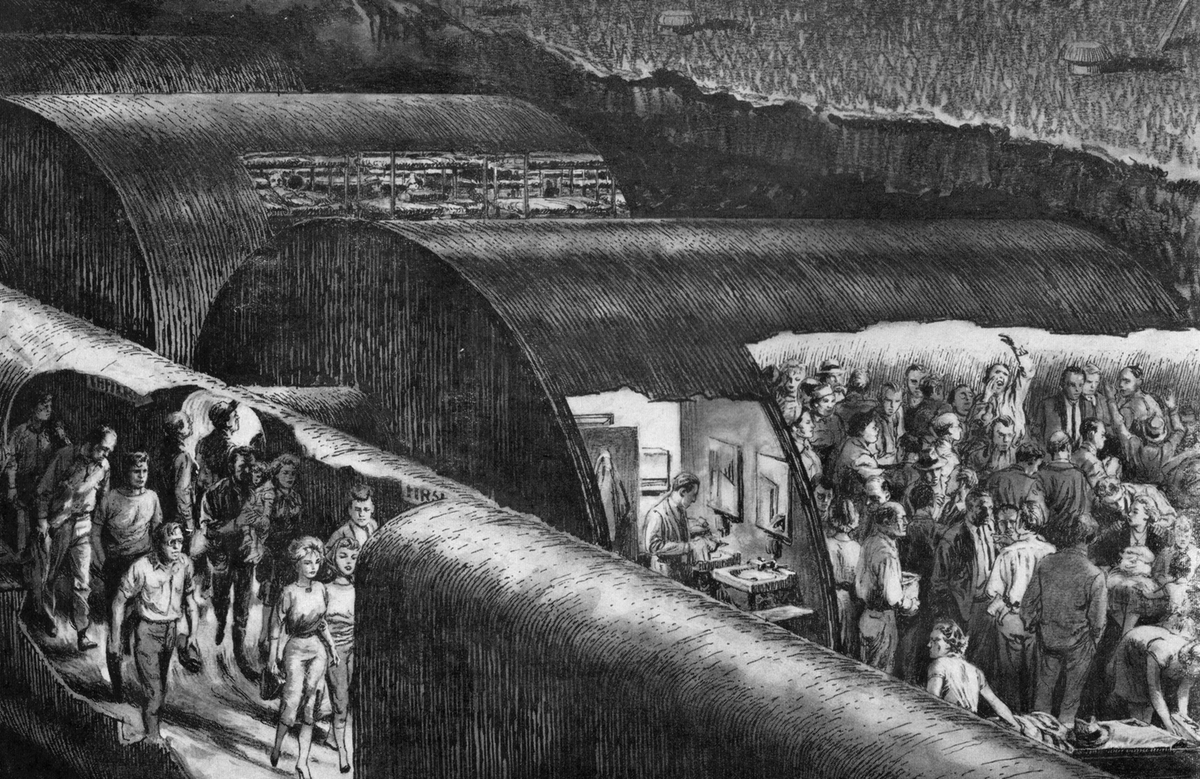Designer Robert W. Blakeley isn’t a household name, but every American has seen his work. No, he wasn’t employed by Coca-Cola or Ford or Disney, but instead worked for the US government. Blakeley’s most famous design? He came up with the yellow and black fallout shelter sign. Sadly, he died last week at the age of 95.
Photo: Getty Images
According to the New York Times, Blakeley first designed the ubiquitous fallout shelter sign in 1961 for the Army Corps of Engineers. Roughly 1.4 million of the signs were produced, which is why you still see them everywhere, even if many of the fallout shelters themselves have been repurposed for any number of different things.
We often think of everyone in the 1950s and ’60s as having their own backyard fallout shelter, but that simply wasn’t the case. A 1963 study by Michigan State University asked 3514 Americans about their attitudes toward nuclear war and fallout shelters. Just 1.4 per cent of Americans had a shelter, and only five per cent said that they wanted to build one in the future. And that’s where the American government came in.
Fallout shelters were seen as a collective good that would help save as many American lives as possible in the event of a global nuclear war. And the early 1960s saw plenty of debates about the role of the government in providing that kind of shelter in public places such as schools and community centres. The sign, designed by Blakeley, was made with simplicity in mind, allowing anyone to see its bright contrasting colours as the world collapsed around them. With any luck, they’d find safety.

Illustration of a propose fallout shelter, scanned from the 12 January 1962 issue of Life magazine
But Blakeley didn’t give his design much thought after the fact and certainly didn’t expect it to define his legacy.
“Like so many other things in life, you solve a problem and go on to the next thing,” Blakeley told the New York Times in 2014 during an interview for the express purpose of his future obituary. “I must have just wiped it out of my mind.”
Born in Ogden, Utah, on 30 August 1922, Blakeley would serve in the Marine Corps during World War II and during the Korean War in 1951 and 52. After graduating from the University of California at Berkeley in 1954 he went to work at the VA for a couple of years before joining the Army Corp of Engineers and doing the work that would be seen by millions of Americans and countless others across the globe.
If you grew up in the US during the 1990s or 2000s there may have had fallout shelter signs in your school that felt hilariously antiquated. I certainly did. But sadly, the idea of nuclear annihilation isn’t much of a joke these days. Tensions between the US and North Korea have hit a strange pitch, as madmen leaders from both sides threaten to destroy each other.
Blakeley may be gone, but his design is becoming depressingly relevant to a new generation of Americans who are witnessing the most dangerous nuclear stand-off since the Cuban Missile Crisis of 1963. Hopefully, Blakeley’s design doesn’t come to define a new era of fear and destruction that went from silly and dated to suddenly urgent. But I’m not holding out hope.
It’s frankly a miracle that anyone survived the first Cold War. Humanity may not be so lucky this time around.
